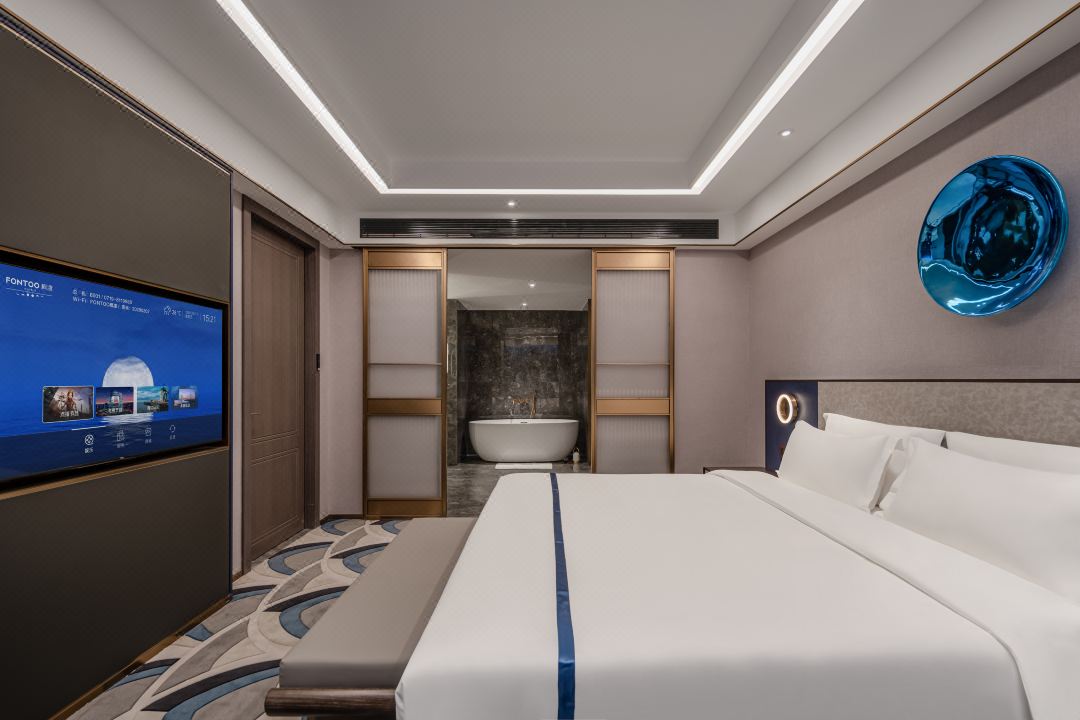How to Prevent Network Loss in Hotel TV System Implementation?

Network loss is a critical issue demanding high priority in the design and implementation of hotel television systems. Network loss not only impacts the quality of TV signal transmission but can also degrade the guest experience and potentially harm the hotel's overall reputation. To prevent network loss, hotels require meticulous planning and optimization across multiple facets.
1. Selection of High-Quality Network Equipment:
The quality of network equipment directly influences signal transmission stability and speed. Hotels should opt for reputable brands of switches, routers, and network cables, ensuring these devices support high-bandwidth, low-latency data transfer. Switches, acting as the network's core, are particularly crucial; their performance dictates the entire network's throughput and stability. Choosing switches supporting Gigabit or even 10-Gigabit Ethernet effectively reduces network bottlenecks and prevents loss stemming from inadequate device performance.
2. Rational Network Topology Design:
Designing an appropriate network topology is key to avoiding loss. Hotel TV systems typically cover multiple floors and rooms, necessitating topology designs that account for signal transmission distance and path. Employing a star topology—connecting all room network devices directly to the core switch—reduces the number of transmission hops, lowering latency and loss. Concurrently, strategic placement of network nodes ensures stable signal reception in every room, preventing picture quality degradation or interruptions due to signal attenuation.
3. Use of High-Quality Cabling:
During network cabling, hotels must utilize high-quality copper cables (e.g., Cat6 or Cat6a and above) and optical fiber. Cable quality directly impacts signal stability and speed. Cat6/Cat6a cables support higher bandwidth and longer transmission distances, effectively reducing signal attenuation and interference. For long-distance runs, fiber optic cable is recommended due to its superior bandwidth and lower inherent signal loss, making it especially suitable for large hotel TV systems.
4. Intelligent Bandwidth Allocation:
TV systems often require transmitting large volumes of HD or UHD video streams, demanding significant network bandwidth. Hotels should allocate bandwidth rationally based on room count and signal requirements, guaranteeing sufficient bandwidth for each room. Traffic management techniques, such as prioritizing different traffic types, ensure TV signal transmission takes precedence over other network traffic, preventing loss caused by bandwidth contention.
5. Optimization of Network Device Configuration:
Detailed optimization of network device configurations is essential. For instance, enabling flow control on switches helps prevent congestion, minimizing packet loss and retransmissions. Configuring appropriate Quality of Service (QoS) policies on routers ensures TV traffic receives higher priority. Furthermore, regularly updating device firmware to address known vulnerabilities and performance issues is vital for maintaining network stability.
6. Implementation of Network Monitoring and Management Systems:
Hotels should consider deploying professional network monitoring and management systems. These systems provide real-time visibility into device status and traffic patterns, enabling rapid detection and resolution of network issues. For example, if a room experiences signal anomalies, the monitoring system can immediately alert technicians for swift troubleshooting, preventing widespread loss. Centralized management systems also simplify configuration and maintenance, enhancing overall network efficiency.
7. Strategic TV Signal Source Selection:
The choice of TV signal source also impacts network loss. Traditional analog TV signals are increasingly being replaced by digital TV and Internet Protocol Television (IPTV). While IPTV offers greater flexibility and scalability by transmitting signals over the IP network, it imposes higher network demands. Hotels must ensure their network can support numerous concurrent video streams. Partnering with high-quality IPTV providers and collaboratively optimizing network configurations can effectively reduce loss and improve transmission quality.
8. Regular Network Maintenance and Optimization:
Networks are dynamic environments; performance can degrade over time due to equipment aging and changing conditions. Regular inspections, maintenance, timely replacement of aging components, and configuration optimization are crucial for sustaining network stability and preventing cumulative loss. Hotels should also stay abreast of technological advancements and proactively integrate new network technologies and equipment to enhance overall performance.
Conclusion:
In summary, designing and implementing a hotel TV system requires comprehensive consideration of equipment selection, network topology, cabling quality, bandwidth allocation, device configuration, monitoring/management, signal source selection, and ongoing maintenance/optimization. Only through meticulous planning and optimization can hotels effectively mitigate network loss, ensuring stable TV signal transmission and high-quality playback. This dedication ultimately delivers a superior viewing experience for guests, elevating overall service quality and competitiveness.
